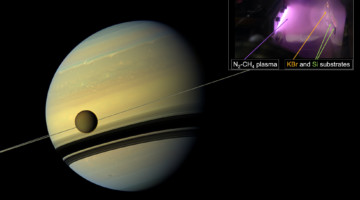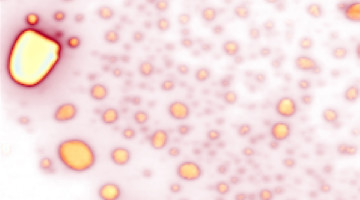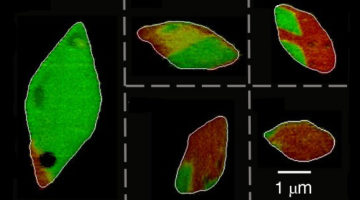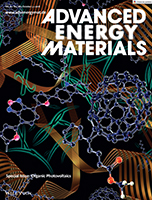Researchers simulated the complex chemistry that may be occurring in the hazy atmosphere of Saturn’s largest moon, Titan, and analyzed the reaction products at the ALS. The work provided new insights into what future Titan probes may encounter upon arrival and what the atmosphere of Earth may have been like eons ago. Read more »
Machine-Learning Team Receives 2021 Halbach Award
This year’s Halbach Award for Innovative Instrumentation at the ALS went to a team of accelerator physicists and computer scientists who were able to use machine-learning techniques to solve a problem that has plagued third-generation light sources for a long time: fluctuations in beam size due to the motion of insertion devices. Read more »
The Inside‐Outs of Metal Hydride Dehydrogenation: Imaging the Phase Evolution of the Li‐N‐H Hydrogen Storage System
Hydrogen absorption and release in lithium amide involves chemical and structural change. Scanning transmission x‐ray microscopy visualizes this phase evolution inside particles, showing a core‐shell architecture, with the more hydrogenated species as the shell for hydrogenation and, more surprisingly, for dehydrogenation as well. Read more »
Machine Learning Helps Stabilize Synchrotron Light
Researchers showed that machine learning can predict noisy fluctuations in the size of beams generated by synchrotron light sources and correct them before they occur. The work solves a decades-old problem and will allow researchers to fully exploit the smaller beams made possible by recent advances in light source technology. Read more »![]()
![]()
Machine Learning Enhances Light-Beam Performance at the Advanced Light Source
Researchers have successfully demonstrated how machine-learning tools can improve beam-size stability via adjustments that largely cancel out these fluctuations—reducing them from a level of a few percent down to 0.4 percent, with submicron precision. The demonstration shows that the technique could be viable for scientific light sources around the globe. Read more »
Renewed Prospects for Rechargeable Mg Batteries
Contrary to previous reports, it’s possible to create a rechargeable battery using magnesium ions if the electrode material is first conditioned at high temperature. With twice the charge of lithium ions, magnesium ions hold great promise as the basis for high-energy-density batteries suitable for use in electric vehicles. Read more »![]()
![]()
Clues to the Early Solar System Preserved in a Meteorite
Scientists analyzing a tiny carbon-rich pocket inside a meteorite found unexpected chemical signatures. Their findings are the first direct evidence that material from the outer solar system may have traveled inward long before planets formed, providing insight into the early solar system. Read more »
Meteorites Suggest Galvanic Origins for Martian Organic Carbon
Nanoscale analyses of Martian meteorites suggest that organic carbon on Mars may have been formed by electrochemical reactions between briny liquids and volcanic minerals, as might occur in a galvanic cell. The study has major implications for astrobiology and could also shed light on the reactions that led to life on the early Earth. Read more »
Hidden Flow of Lithium Ions Points Way to Better Batteries
Experiments revealed that lithium ions unexpectedly flow along the surfaces of electrode particles, boosting the growth of lithium “hot spots” that shorten battery life. The results correct decades’ worth of assumptions and will help improve battery design, potentially leading to a new generation of lithium-ion batteries. Read more »![]()
Miscibility–Function Relations in Organic Solar Cells: Significance of Optimal Miscibility in Relation to Percolation
In this article, Ye et al. present the determination of liquidus miscibility and its temperature dependence of organic films by scanning transmission x‐ray microscopy and outline an approach to convert liquidus miscibility to an effective Flory‐Huggins interaction parameter χ, which will pave a way to predict morphology and processing strategies of polymer solar cells. Read more »









